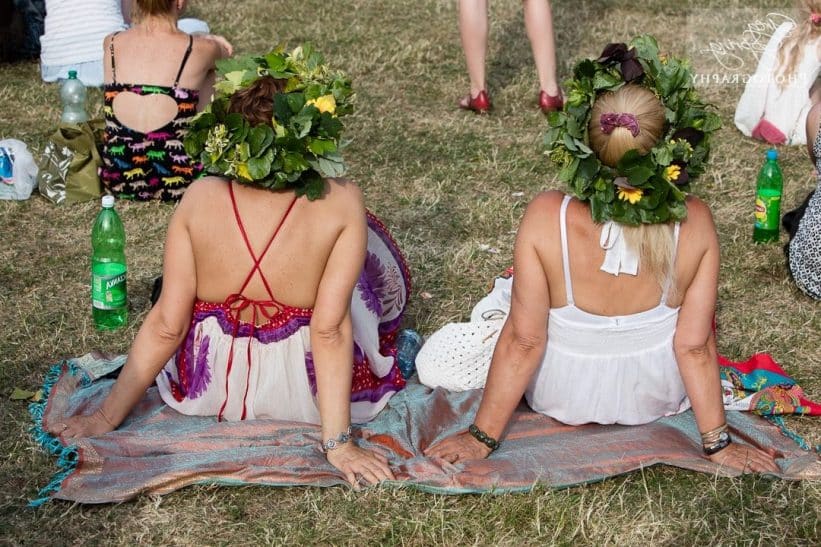On the brink of summer, everyone overdoses on the manic strawberries and prolific cherries filling the market stalls in every village and city in Poland. It is a cultural thing to carry your strawberries home in the iconic straw market basket specially made to hold a kilo of berries. Yes, you may nibble while riding home on the tram. But strawberries are only one pleasure of life here in mid-June. The long evenings are brilliant. Everyone is out in the streets, walking, idling, eating ice cream, drinking beer and generally indulging summer in the city. At 21.30 (for Americans, that’s 9.30 pm), the sun is finally dipping below the horizon but the sky is still light and the evening extends for another hour. The Summer Solstice has arrived and with it, summer, festivals, and scores of European tourists.
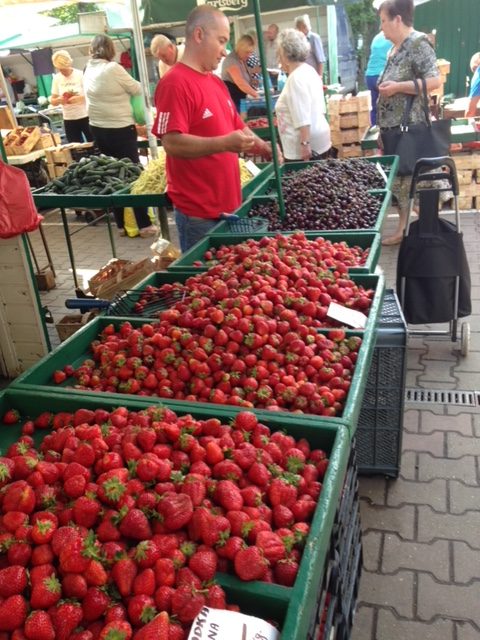
We cannot bear to shut ourselves up in the confines of the flat. We walk the squares and streets as long as the musicians are still playing and we can sit with our drinks at a table under a canopy for hours. Or until the cafe closes. No one ever shoos you away from a table once you have claimed it. The check never comes until you ask for it.
The Summer Solstice actually occurs on only one night, June 21st, the shortest night of the year. Here in Kraków, it is celebrated with several overlapping festivals. Origins of the Solstice festivities are rooted in Celtic, Slavic, and Scandinavian spiritual heritages derived from pagan customs and folk traditions. St. John’s Day in the church calendar is usually celebrated around the Solstice. It brings with it a separate set of festivals, music and dancing. The Christian St. John’s Day Eve is named after Saint John the Baptist, the patron, who baptized followers with water. And so on this evening, water is consecrated to protect against evil. St. John’s is usually marked by the ‘medieval fest’ with costumed dancers and actors performing throughout the weekend on the banks of the Wisła River under the walls of the Wawel castle. There is food and crafts and lots of activities for the children.
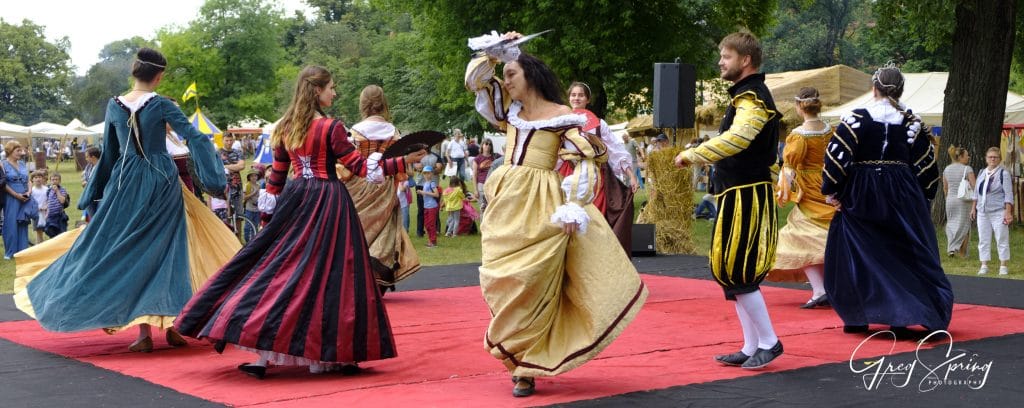
The shortest night of the year, called Noc Kupała (no-ts cu-pa-waa) in Polish, celebrates the elements of fire, water, moon, sun, love and fertility. At the Krakus Mound (Kopiec Krakusa), in Kraków, mysterious ancient rites are performed. The curious Krakus Mound is a tumulus or burial hill thought to be the resting place of Kraków’s mythical founder, King Krakus. According to one hypothesis, the mound, which was once ringed with four smaller mounds, is of Celtic origin dating from the 1st or 2nd century BC. It is a perfect setting for midsummer madness. People jump over flames to cleanse and protect against evil and bad fortune. Young women, dressed in white with wreaths of flowers in their hair, go down to the river in the twilight to float lit candles set in flower wreaths in the slowly moving waters.
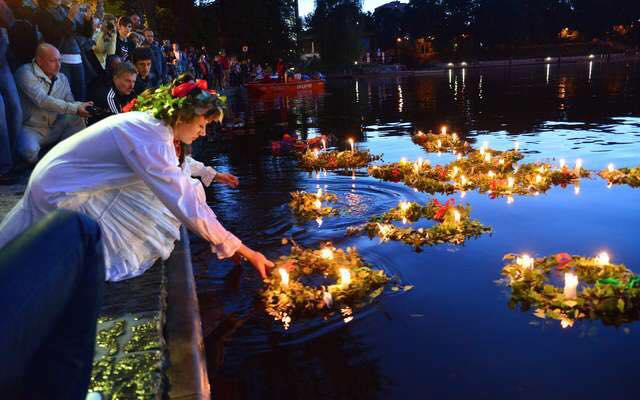
Then follows the annual festival called Wianki (Vee-on-key) which means Wreath. It is a unique cultural extravaganza of music, theater, and pyrotechnics. The festival is named after the tradition of weaving wreaths from the available flora of the fields, meadows, and woods. During Wianki Weekend, beautiful wreaths worn on your head are a fashion statement. Women and girls, young and old wear all manner of wreaths, from simple paper flower headbands to beautiful blowsy flowered wreaths tied with lovely satiny ribbons that trail down the back. The naturally constructed wreaths of wildflowers, ferns, and grasses are endemic to the old ways. There is a wreath-making workshop and a contest for the most beautifully designed wreaths as worn on the heads of some beautiful women, old and young.
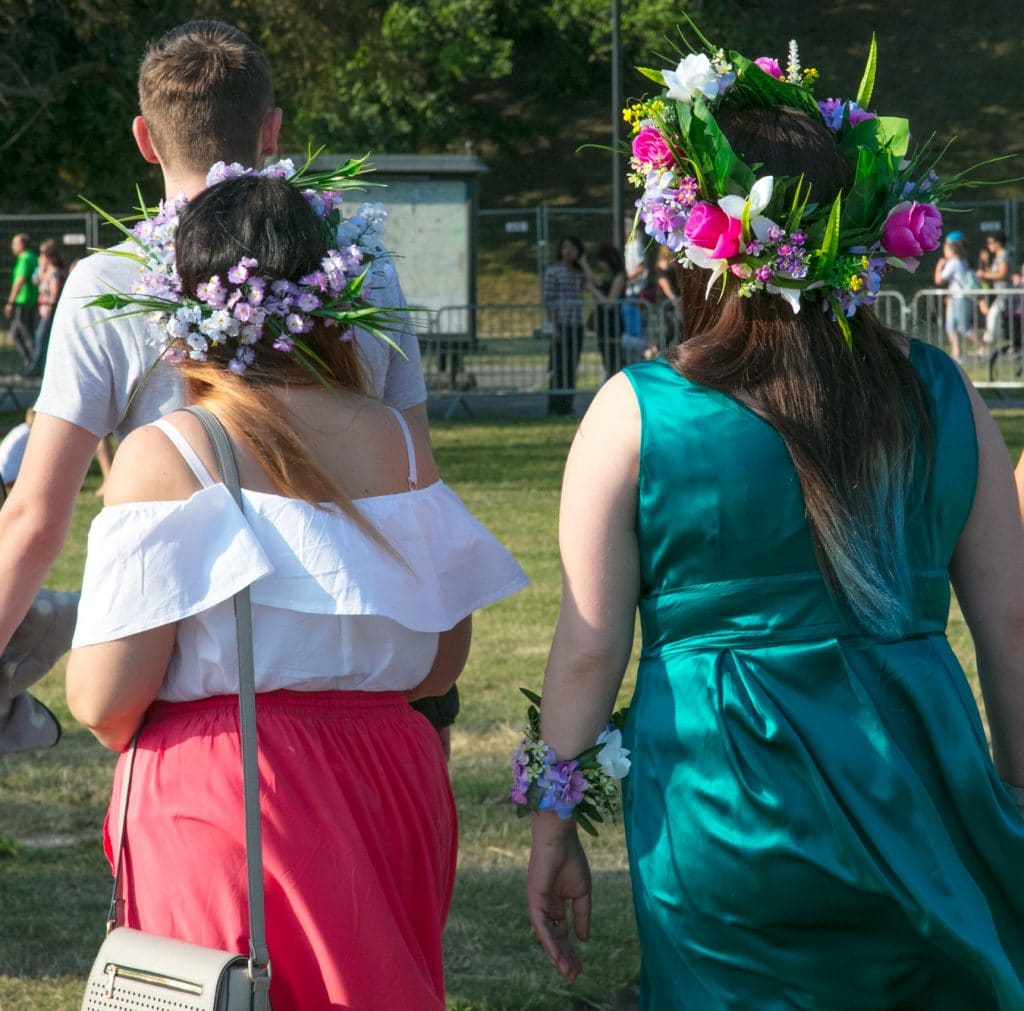
On Wianki Saturday, there are eight different stages set up around the city for a Fete de la Musique. The genres vary around the venues but they predominantly showcase well-known Polish artists. And although the venues are dominated by modern pop bands, there are also classical and jazz performances. The performances are of a very high caliber.
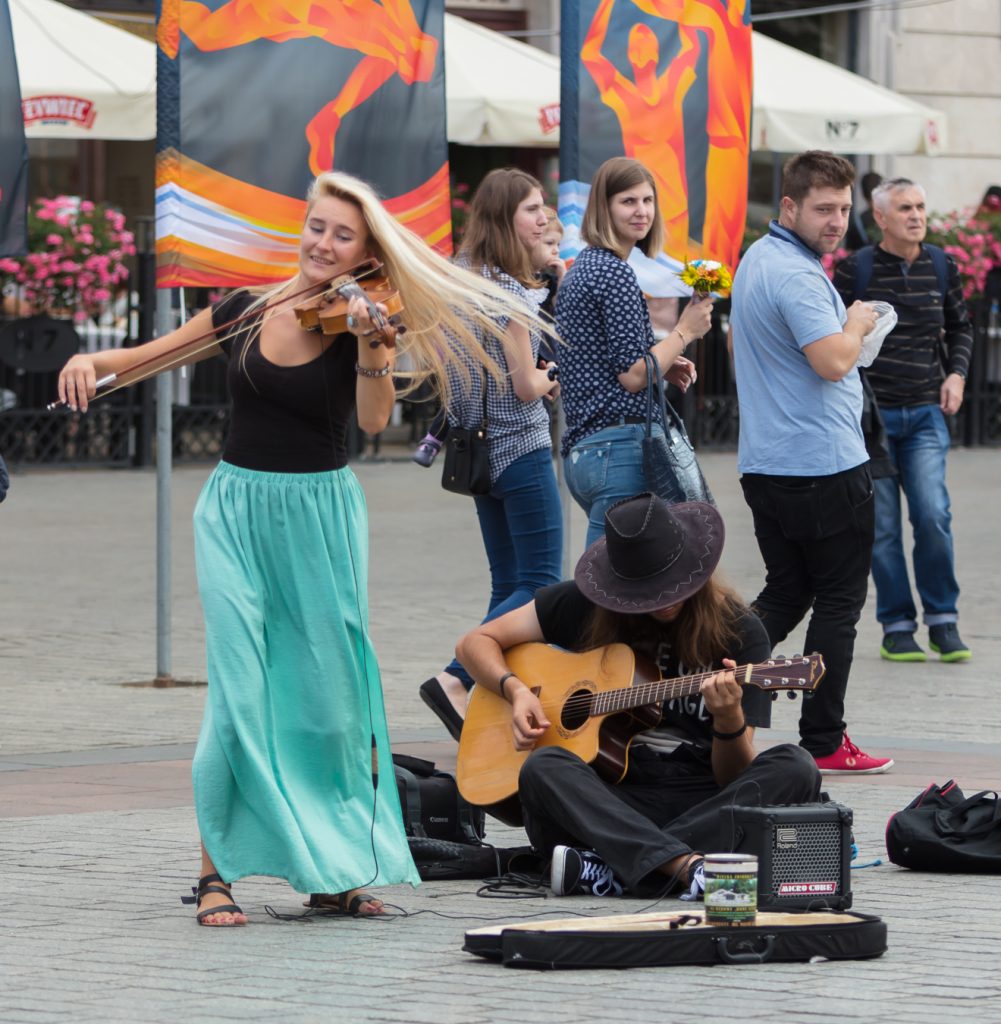
The night festivities include a Club Night. It is like a pub crawl with musical venues in the chic cavernous clubs located all over Kraków.
For programs and information about the Wianki 2018 see: www.wianki.eu
All day music binges on outdoor stages flush swallows from the old architectural eaves into the long summer evening. After wandering the city from venue to venue in your flowered wreath, it is time to assemble for fireworks on the banks of the Wisła River in the shadow of a stalwart old castle called Wawel. Here children chase each other with illuminated Jedi sabers over the grassy banks and the sausages are still grilling in the outdoor stands as the trams, packed with revelers, deposit their citizens for the riverside pyrotechnic display. At 11.00 a burst of light and everyone shouts and jumps from their blankets or seats as the fireworks startle the just darkened sky. After about 30 minutes, as the last wave of brilliant explosions clear and the sky is dark but filled with smoke, applause explodes from all directions. The pyrotechnics are among the best I have ever seen.
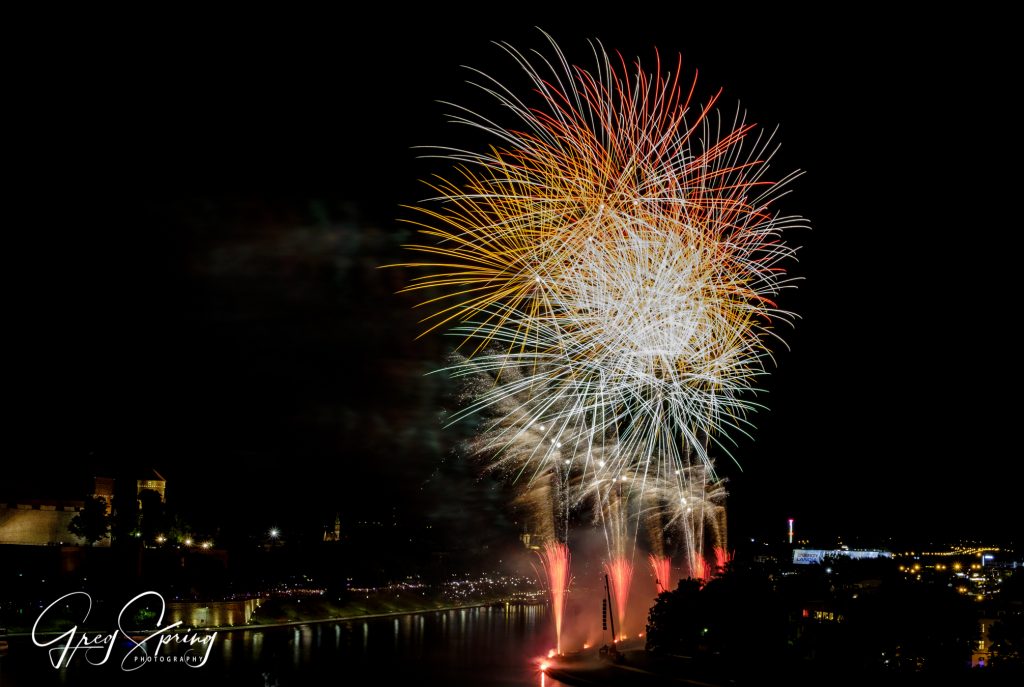
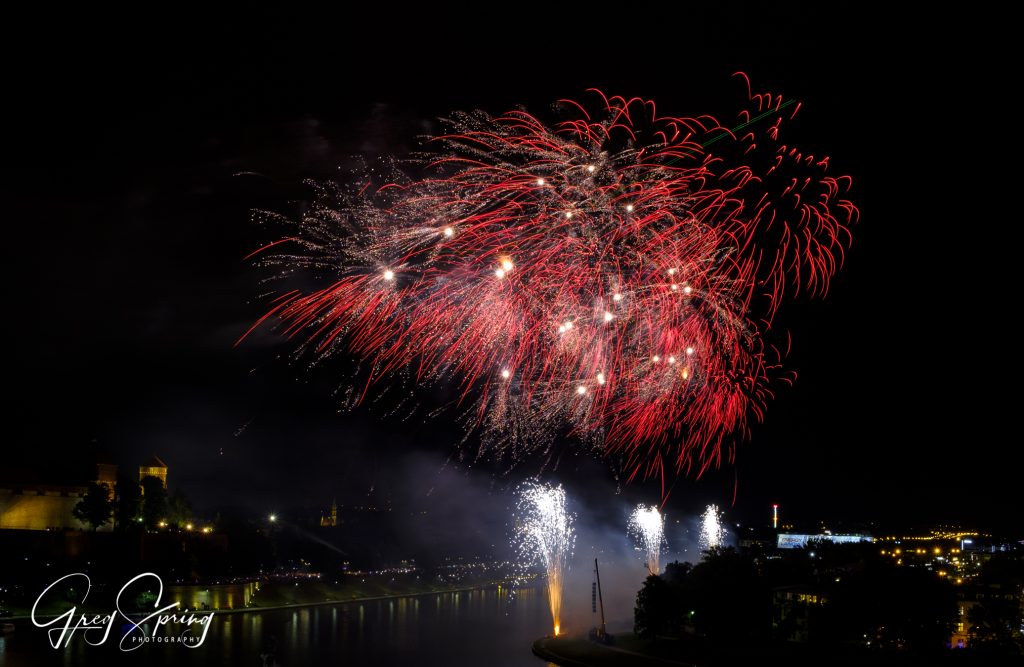
Yes, June is the month to be in Kraków. The month is filled with festivals that continue into July and August. For complete summer schedules see: www.kartnet.pl
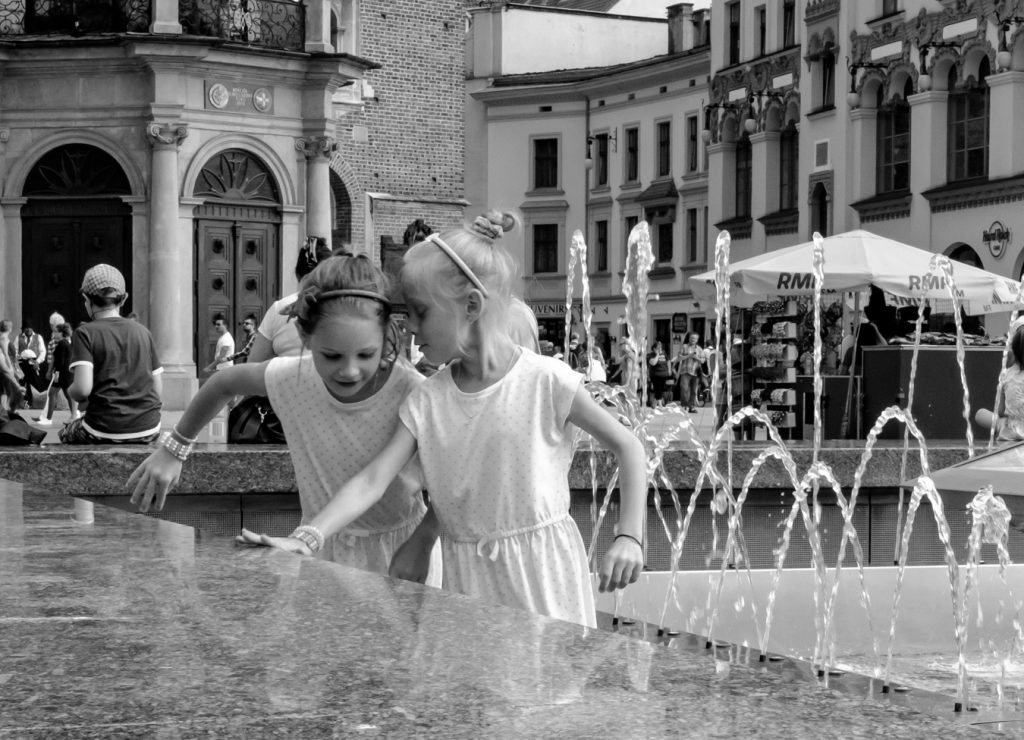
And, if you are in Poland in June, make time for Wrocław, Sopot, Gdańsk and Warsaw, cause who the heck knows what might be going on there. Summer Solstice madness and revelry is rampant throughout the country. Poland knows how to welcome and celebrate the summer.
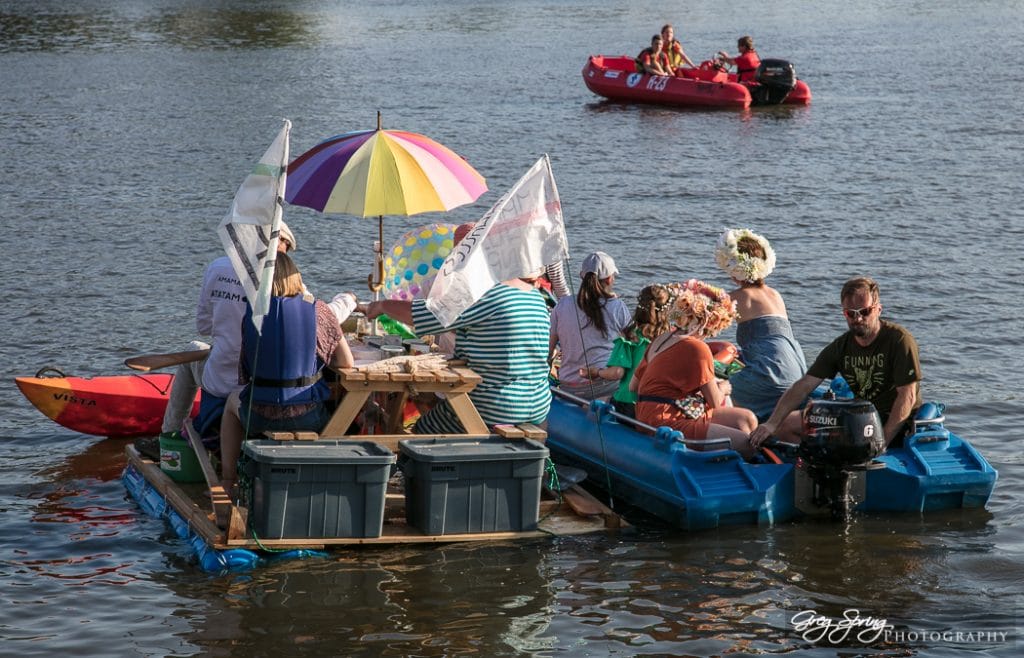
Summer Solstice
This was when the whole world measured time
This is when the light would turn around
This is where the past would come undone
and the spinning earth will mark a new beginning
Let’s go back in time, to when it all began
To the breaking of new dawns
Where moments bright with fire, would light the chanting song
Where pagans worshipped sun and danced among the trees
Wore strange masks of covered straw, and blessed cold ash with awe
Wreaths hung upon the door against all spirit’s, dire
and when the winter’s grasp let go, the sun reversed the pyre
This was when the whole world measured time
This is when the light would turn around
So that spring arrives, and seeds will sprout and grow
Oh, radiant sun, stretch the day, shorten night
Return earth’s darkness into light
This is where the light will turn around
And this was where the past has comes undone
-Carrie Richards
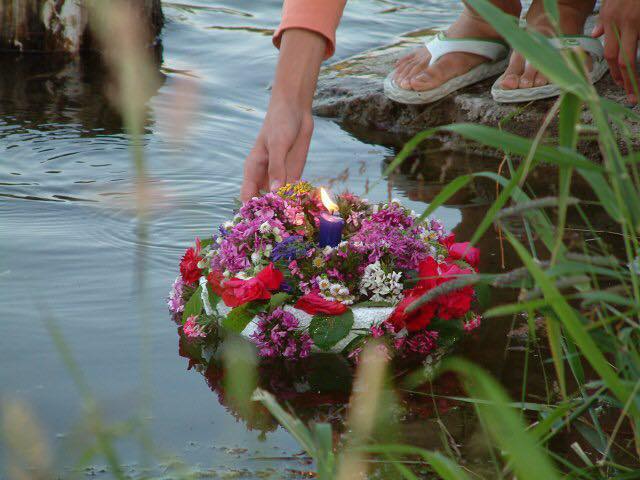
“Why Poland?” is a blog written and produced by Grace Nagiecka with photos by Gregory Spring. Kraków, Poland 2018.
We invite you to visit our other blog pages, “Wanderlusting Dreams” at https://www.wanderlustingdreams.com and “Greg Spring Photography” at https://gregoryspring.com Thank you.
